André Previn – Rollerball OST – Executive Party
United Artists Records – UA 36 033 Releaesed 1975
Track A: Executive Party
Track B: Executive Party Dance
Jazz influenced classical music composer-conductor, Andre Previn was responsible for one of the most funkiest spaced out film tracks you will ever hear, called Executive Party, released for the Rollerball soundtrack in 1975. Although I had watched this movie numerous times, the first time I really gave this track some serious and well deserved attention, was when I purchased the The Mighty Mellow (A Folk – Funk Psychedelic Experience) compilation in 1997, from the infamous Sydney record store Good Groove, which was recommended by the owner Tom. The comps linear notes and information was vague, mixed up and song titles were incorrect. I was certain that Andre Previn was incorrectly credited until I discovered it was from his Rollerball soundtrack.
Previn was born in Berlin to a Jewish family, with three children of Charlotte and Jack Previn, a father who was a lawyer, judge, and music teacher. All three children received piano lessons but André was the one who enjoyed them from the start and displayed the most talent. At six, he enrolled at the Berlin Conservatory. In 1938, Previn’s father was told that his son was no longer welcome at the conservatory, despite André receiving a full scholarship in recognition of his abilities, on the grounds that he was Jewish.In 1938, the family left Berlin for Paris, and Previn’s father enrolled him into the Conservatoire de Paris where he learned music theory. In 1938 his family left Paris and sailed to New York City, then their journey continued to Los Angeles, and Previn learned English, his third language after German and French, through comic books, reading the dictionary, and watching films.
In 1946 he graduated from Beverly Hills High School, but had already started working for Metro-Goldwyn-Mayer as a composer-conductor, and arranger, after their music department noticed his work for a local radio program and hired him. Previn recalled that MGM was “looking for somebody who was talented, fast and cheap and, because I was a kid, I was all three. So they hired me to do piecework and I evidently did it very well”. Previn focused his attention on film scores and jazz, and stayed at MGM for 16 years, but despite the secure job and good pay, he had come to feel increasingly confined, and consequently desired to pursue classical music outside of film scores. He resigned from MGM at 32, wanting “to gamble with whatever talent I might have had”.
Previn would branch out into classical music, theatre, easy listening music and contemporary classical music. His jazz recordings, as both leader and sideman, were primarily during two periods: from 1945 to 1967, and from 1989 to 2001, with just a handful of recordings in between or afterward. Previn was involved in creating the music for over 50 films and won four Academy Awards* for his work, and in 1966, Previn was the first person in the history of the Academy Awards to receive three nominations in one year. Some of his releases that I lean towards to, are two collaborations…Ravi Shankar & André Previn – London Symphony Orchestra Concerto For Sitar & Orchestra, from 1971, and the Valley Of The Dolls soundtrack, which was conducted by John Willams, and feature song composing by Previn and his then wife Dory, who was a poet, lyricist and singer song writer. I’m also a admirer of his Holst release of The Planets, Op. 32, in 1974.
Rollerball is a classic seventies sci-fi action film, with a large cult following and a very iconic look. It was directed by Norman Jewson, who had also directed The Cincinnati Kid (1965), In The Heat Of The Night (1967), The Thomas Crown Affair (1968), amongst others. These all did well for him, and taking on this dark, futuristic, violent action film, must have been a challenging curve ball he was looking for.
The Storyline: In a futuristic society where corporations have replaced countries, the violent game of Rollerball is used to control the populace by demonstrating the futility of individuality. However, one player, Jonathan E., rises to the top, fights for his personal freedom, and threatens the corporate control (IMDB – Jeff Hansen). The film is based on a short story by William Harrison’s “Roller Ball Murder”, first released in Esquire magazine in 1973. Although Rollerball may first look like a science fiction sports movie, it’s actually a deep philosophical look into a dystopian future, and looks into government control versus free will. James Cann plays the hero Jonathan, the ultimate champion and hero of Rollerball, and is adored by masses of fans of the blood sport. But he is getting on, well for a demanding sport that is evolving by becoming increasingly more violent. However the head of the energy corporation who runs society, wants him to retire, but when Jonathan refuses, things get intensely dangerous, and the game becomes a fight for his life. The film demonstrates that the individual can triumph over insurmountable odds and cautions against corporate control of society.
Jewson was a big fan of A Clockwork Orange, and used the film as a reference point for defining a world of concrete and steel imagery. He also adopted the idea of using classical music for this fierce movie, because of Clockwork, and also 2001 A Space Odyssey, and believed the timeless score would less likely age the film in the future. Previn composers The London Symphony Orchestra to perform Shostakovich’s Symphony No. 5 movements to establish tone, mood, and atmosphere for certain scenes, and also cunningly uses Tchaikovsky’s Sleeping Beauty Waltz for action and drama. Bach’s Toccata and Fugue in D minor plays during the opening title sequence and again at the final scene, book-ending the film. Previn wrote the space jazz track Executive Party and it’s lounge accomplice Executive Party Dance, and as isolating as they may seem on the album, they sit well within the more laid back dining scenes in the movie. Unfortunately Executive Party, one of my most favourite soundtrack instrumentals of all time, clocks in at only 1. min 47sec. But there’s also something nice about that.
These two tracks may feel odd or misplaced on the LP, amongst Previn’s composed The London Symphony Orchestra works. And I’m sure many like myself, that knew this track, before finding a copy of the soundtrack, were expecting and hoping for more wigged out grooves, like these featured tracks. But it shows us the diversity and dexterity of Previn’s mind, and how he was an artist of all musical styles. After learning more about Previn and this soundtrack, I like how the tracks sit amongst the classical tracks on film and on vinyl. I do admit I wish there was more of this to be found in his extensive catalogue, but I’m ever so grateful that these tracks not just made their place onto the LP, but also were released as 7″ singles.
* Previn won four Academy Awards for Gigi (1958), Porgy And Bess (1959), Irma La douce (1963) My Fair Lady (1964) and was nominated 11 times.
Previn was married four times which included 9 years with Mia Farrow.
Newsom has been nominated for the Academy Award Best Director three times in three separate decades for In the Heat of the Night (1967), Fiddler on the Roof (1971) and Moonstruck (1987).

Japanese and French movie poster releases.
If you like this kinda stuff, check out some other soundtrack titles I’ve dug into….
Berto Pisano featuring Doris Troy – Kill! Them All!
Placebo – Balek
CBS 1647 Netherlands 1973
12 years ago today we lost the legendary Marc Moulin, so I thought this is a nice opportunity to post the one and only seven inch Placebo ever released, in his honour. I was hoping I’d be able to dig up and share some hidden knowledge about this great man, but despite his legendary cult following even to this day, still not much out there that hasn’t really been shared before. I will however link to some rare footage and interviews that I have sourced and referenced below post.
The Belgian musician, producer and journalist was without a doubt a pioneer to experimental electro jazz funk. An absolute master on keyboard and synthesizer, his pre-hip hop rhythms and sound experiments was more than high end musicianship, but was also luminescent artistry at it’s peak.
Moulin began his career in the 1960s playing the piano throughout Europe and in 1961 won the Bobby Jaspar trophy for Best Soloist at the Comblain-la-Tour festival. In the early-mid seventies, Moulin formed the jazz-rock group Placebo with his close friend, guitar player Philip Catherine. They released three LP’s from 1971 to 1974 and were widely played on the alternative scene in the early 70’s. The first two Lp’s Ball Of Eyes and 1973 are the real blazers, but all 3 releases are believed to have very low pressing numbers, resulting in big money exchanges for original copies. But of course the allure comes down to every moment in between every groove.
Balek is a deep dark and cosmic journey and thankfully runs it’s entirety on this 7″, however it’s beautifully sedated flip Phalène II, is understandably an edited down version due to it’s running time on nearly 8 mins on the LP. As a music blog, I prefer not to try and describe sounds, moods and feelings, and instead would prefer the listener to appreciate their own ears and interruptions. But if I was too try and describe Balek? Balek is a dark light. It is science fiction in it’s sexiest form. It is flesh made up from electric energy. Creeping and slithering, seductively, enticing the soul. It is an ageless composition that has not lost any lustre since conception, and will continue to be sampled and held up in high regard by music enthusiasts and record collectors around the world. The LP 1973 as a whole, is a trip of syncopated moods and Balek is quite the pleasant disturbance. Even with everything that has happened in music from the then to the now, this instrumental album still engages defiantly. The excitement Placebo must have stirred up among the underground hipster jazz heads, with their groundbreaking and captivating musical explorations, must have been at the height of praise at the time.

In 1975 Moulin would release another underground showpiece entitled Sam’ Suffy, this, his premier solo album. A compelling and unique mosaic of jazz, soul, and electronic elements, it now has become highly influential, especially in acid jazz, hip and trip hop circles around the planet. Many fans say this is Moulin at his best. It’s a stunning piece of work, comparable to a cinematic dream.
Following Placebo’s breakup in 76, Moulin went on to become a member of the avant-rock band Aksak Maboul in1977 and also formed the space pop group Telex in 1978. Alongside programmer/sound engineer Dan Lacksman and vocalist Michel Moers, Telex would release five albums between 1979 and 1988 and would end up with some big sales in Europe, UK and in the US, with their unique quirky computer electro dancers.
During the ’80s, Moulin worked as a radio producer, and was the big shot of a revolutionary FM radio station in Belgium, Radio Cité. He would interview greats such as Miles Davis, and also wrote for various Belgian publications, including ‘Télémoustique’. I highly recommend you check out the link below to witness the live recording of Placebo in Bruxelles (Belgium, 12th April 1973).
Moulin died of throat cancer on 26 September 2008. He was 66 years old.
Below are links of sourced material and related interests…
Placebo extract from the 55 minutes documentary “Three Days In April”
Jazz en Belgique- Three Days In April
Miles Davis interview Marc Moulin
La fabrication de Moscow Diskow (Telex)
Placebo credited line up
Marc Moulin Arranged By, Composed By, Keyboards, Synthesizer
Drums – Garcia Morales
Guitar – Francis Weyer, Philip Catherine
Percussion – J.P. Oenraedt
Saxophone, Flute, Accordion – Alex Scorier
Trumpet – Nicolas Fissette
Trumpet [Electric], Flugelhorn – Richard Rousselet
Bass – Yvan De Souter
Edda Dell’Orso – Kukumbe (Le montagne della luce)
As that saying goes, behind every great man, there is a great lady, but there was more than one that strengthened one particular composer’s work if we’re talking about Morricone. A key element so important to his sound, Morricone would expose and you could even say, flaunt his leading ladies up front in the mix down, even if they were at the time providing background sounds or atmospheric vocals.
I’m going to parallel two posts celebrating two important women with names that are synonymous with Morricone, particularly from the 60’s and 70’s, when that era of his film scores were infamous for that beautiful sensual psychedelic and at some times haunting sound. But I also want to present other composer’s that all contributed to that now distinctive classic Italian cinematic sound if that time. This post I’ll be looking into an Edda Dell’Orsa composition she undertook for one of those other composers, and with a follow up post, I will pursue a journey into the works of Maria Cristina Brancucci, also known as Christy. As always, I wish I was able to enlighten you all with more information about Dell’Orso’s musical journey, but facts and life details are a little mysterious and not too easy to come by. However I will go through a bunch of my favourite Edda tracks and touch on some of those great composer contributions.
Edda Lucia Sabatini, was born in Genoa, Italy on February 16, 1935 and married pianist Giacomo Dell’Orso in 1958. She studied singing and piano at the National Academy of Santa Cecilia in Rome from around 1958, and in time she would possess a beautiful soprano voice with a three octave range that would stamp many now legendary composers work.
![]() Around the mid sixties, Morricone was the first composer and conductor to use her astonishing voice for a feature film, and with immense artistry, he created unforgettable innovative vocal lines and sound effects. One of those early soundtracks was for Sergio Leone’s 1966 Il buono, il brutto, il cattivo (The Good, the Bad and the Ugly) and it includes one of the most celebrated Morricone’s themes, The Ecstasy of Gold, which is played while Tuco is frantically searching a cemetery for the grave that holds $200,000 in gold coins. This amazing piece of cinematic music has been covered from Yo Yo Ma to Metallica, but as famous as this soundtrack is today, Edda was actually was uncredited for her part. The soundtrack album was on the charts for more than a year, reaching No. 4 on the Billboard pop album chart and No. 10 on the black album chart. The main theme was also a hit for American musician Hugo Montenegro, whose rendition on the was a No. 2 Billboard pop single 2 years later in 1968.
Around the mid sixties, Morricone was the first composer and conductor to use her astonishing voice for a feature film, and with immense artistry, he created unforgettable innovative vocal lines and sound effects. One of those early soundtracks was for Sergio Leone’s 1966 Il buono, il brutto, il cattivo (The Good, the Bad and the Ugly) and it includes one of the most celebrated Morricone’s themes, The Ecstasy of Gold, which is played while Tuco is frantically searching a cemetery for the grave that holds $200,000 in gold coins. This amazing piece of cinematic music has been covered from Yo Yo Ma to Metallica, but as famous as this soundtrack is today, Edda was actually was uncredited for her part. The soundtrack album was on the charts for more than a year, reaching No. 4 on the Billboard pop album chart and No. 10 on the black album chart. The main theme was also a hit for American musician Hugo Montenegro, whose rendition on the was a No. 2 Billboard pop single 2 years later in 1968.
This was an incredibly busy period for Dell’Orso recording from film to film, studio to studio. Westerns were of course very popular after the success of A Fistful Of Dollars, and the hard working Dell’Orsa kept providing the goods, including the very moving titled track C’era una volta il West (Once Upon a Time in the West) for Sergio Leone in 1968, another Morricone partnership (1*). Again in ’71, another fitting title track with the quirky Giù la testa for Leone’s Duck, You Sucker! (also known as A Fistful of Dynamite and Giù la testa), but she also worked far beyond the Italian West.
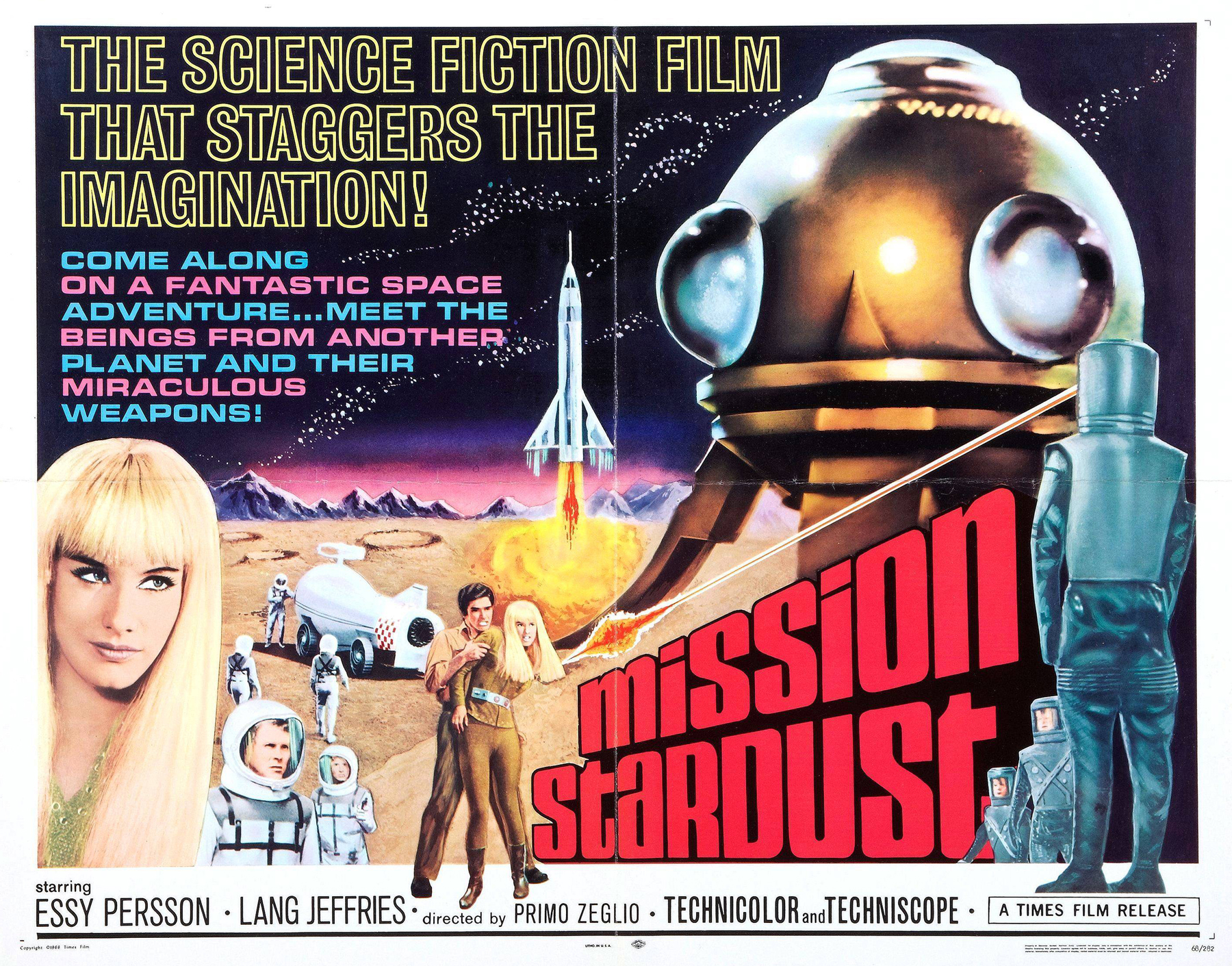 In 1967 Dell’Orso scores the opening swinging title song Seli, for the Italian science fiction film Mission Stardust (…4 …3 …2 …1 …morte), composed by Antón García Abril & Marcello Giombini. Some fans of the genre consider this offbeat film so appallingly bad that they playfully deny its very existence, however this rare soundtrack is also called a masterpiece by many jazzy lounge aficionados, which I tend to support. The next year Dell’Orsa contributes to the infamous Danger: Diabolk soundtrack, offering 3 alternate versions of Deep Down…The Shower, Eva’s Holy Dress and the tripped out, whimsical Emerald Bikini version. The title track was performed by Christy, another female legend of the Italian cinema soundtrack that Morricone liked to work with. 1969 offered up a true classic Dell’Orso-Morricone cooperative, with Metti una sera a cena for the Italian drama film of the same name, directed by Giuseppe Patroni Griffi. One of my favourites.
In 1967 Dell’Orso scores the opening swinging title song Seli, for the Italian science fiction film Mission Stardust (…4 …3 …2 …1 …morte), composed by Antón García Abril & Marcello Giombini. Some fans of the genre consider this offbeat film so appallingly bad that they playfully deny its very existence, however this rare soundtrack is also called a masterpiece by many jazzy lounge aficionados, which I tend to support. The next year Dell’Orsa contributes to the infamous Danger: Diabolk soundtrack, offering 3 alternate versions of Deep Down…The Shower, Eva’s Holy Dress and the tripped out, whimsical Emerald Bikini version. The title track was performed by Christy, another female legend of the Italian cinema soundtrack that Morricone liked to work with. 1969 offered up a true classic Dell’Orso-Morricone cooperative, with Metti una sera a cena for the Italian drama film of the same name, directed by Giuseppe Patroni Griffi. One of my favourites.
Dell’Orso moved into another film genre with the thriller La stagione dei sensi (Season of the Senses), bringing with her the lovely bossa styled Una Voce Allo Specchio. The title track for Giuseppe Patroni Griffi’s 1969 drama, Metti, Una Sera A Cena, is classic and rich in Dell’Orso spices, and was covered a few years later quite nicely by Milva. The 1967 chilling score for Bruno Gaburro sci-fi post-apocalyptic Ecce Homo I Sopravvissuti, which gave Morricone an alternate opportunity to get down low into the darker side of Dell’Orso’s vocal soul, and the outcome is a soundtrack which offer varied versions of Venuta dal mare throughout, that all raise the hairs. Staying on the horror theme, Dell’Orso contributed to two films by Italian shock horror director Dario Argento, the first in 1970 called L’uccello Dalle Plume di Cristallo (The Bird With Crystal Plumage), and then for Perche Si Uccidono? (Why Do They Kill Themselves), a film essay about drugs and self-destruction. For the latter 1976 film, the score was a collaboration with composer Fabio Frizzi and instrumental band Goblin (often used by Argento), under the pseudonym of Il Reale Impero Britannico.
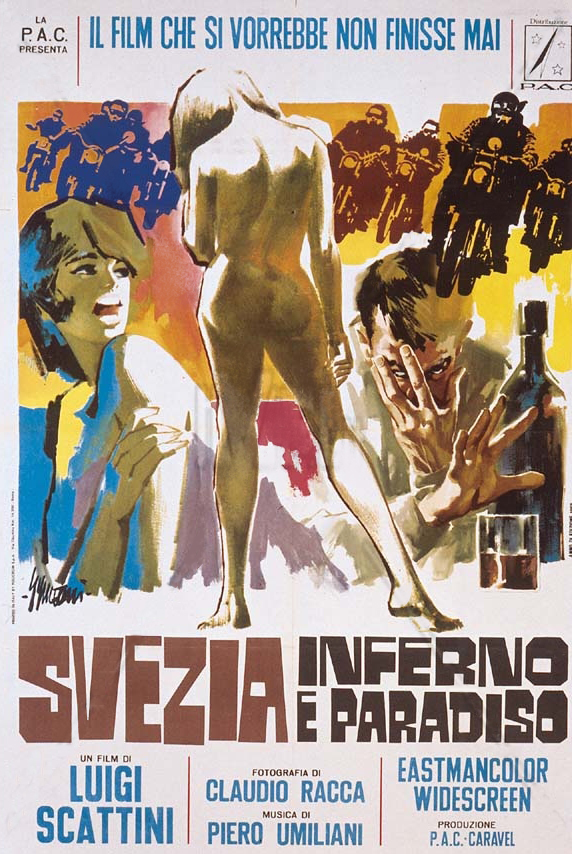 Dell’Orso was also providing her voice for other prominent, mostly Italian composers of those times, and was also a key figure of the I Cantori Moderni choir, which was founded by Morricone’s childhood friend and composer Alessandro Alessandroni (2*)(3*). Piero Umiliani was one composer that regularly worked with Edda & I Cantori Moderni, and some of the best Dell’Orso work came from this collaboration. One of Umiliani’s most recognised tracks is Mah Na Mah Na, which he did for Svezia, Inferno E Paradiso, a 1968 pseudo-documentary about sexuality in Sweden, which ironically was later popularized by Sesame Street and The Muppet Show. Another Umiliani-Dell’Orso standout is the fuzzed up Le isole dell’ amore, for the 1970 film with the same title, which to be honest I know absolutely nothing about! Another soundtrack worth mentioning from the same year, is the impossible to find whacked out 5 Dolls for an August Moon, originally titled 5 Bambole per la Luna d’Agosto, and directed by Mario Bava (4*). Also check out the very chic Luna Di Miele, which was recorded for the documentary directed by Mino Loy and Luigi Scattini called Questo Sporco Mondo Meraviglioso, and includes whistling by Alessandro Alessandroni.
Dell’Orso was also providing her voice for other prominent, mostly Italian composers of those times, and was also a key figure of the I Cantori Moderni choir, which was founded by Morricone’s childhood friend and composer Alessandro Alessandroni (2*)(3*). Piero Umiliani was one composer that regularly worked with Edda & I Cantori Moderni, and some of the best Dell’Orso work came from this collaboration. One of Umiliani’s most recognised tracks is Mah Na Mah Na, which he did for Svezia, Inferno E Paradiso, a 1968 pseudo-documentary about sexuality in Sweden, which ironically was later popularized by Sesame Street and The Muppet Show. Another Umiliani-Dell’Orso standout is the fuzzed up Le isole dell’ amore, for the 1970 film with the same title, which to be honest I know absolutely nothing about! Another soundtrack worth mentioning from the same year, is the impossible to find whacked out 5 Dolls for an August Moon, originally titled 5 Bambole per la Luna d’Agosto, and directed by Mario Bava (4*). Also check out the very chic Luna Di Miele, which was recorded for the documentary directed by Mino Loy and Luigi Scattini called Questo Sporco Mondo Meraviglioso, and includes whistling by Alessandro Alessandroni.
So lets now move on to the feature 7″ which was recorded for Giorgio Moser’s TV special Le Montagne Della Luce. Kilimangiaro is a beautifully produced composition with Dell’Orso’s trademark atmospheric artistry. Arranged by Gianni Oddi and composed by Romolo Grano, this track alone is well worth the effort it will take to find this rare thing. However while the titled A side was probably the selling point, it’s the magnificent B-side Kukumbe, that I think is the dynamic and most grooviest track she’s worked on. Big breaks, fender rhodes, jazzy trumpet, congas and top scat vocals by Edda, all amount up to a very sizeable and rhythmic killer production. I’ve been fortunate enough to play this on a big sound system and it was real fun! That bass drive grooves very nicely with that back beat. Now if you’re hoping that there’s a few Dell’Orso 7″s that you need to get a hold off, well in fact as far as I know there are only a few officials, one other being an earlier release from ’69 titled Sospendi Il Tempo, for the psychodrama La stagione dei sensi.
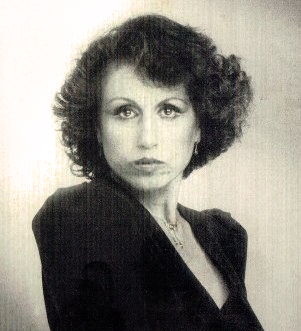 Dell’Orso would continue to record for many soundtracks and collaborate with many musicians. There was a very pertinent chemistry delivered in 1974 when Dell’Orso voice was utilized quite significantly on Italian master guitarist Bruno Battisti D’Amario’s album Samba Para Ti, which includes the beautiful spaced out Show Samba and the frantic upbeat Playa Sin Sol. The following year proceeded with a second team-up album called Granada and includes the standout upbeat latin dancer Su Delicia and a very cool version of Ipanema. In 1976 she worked alongside her hubby’s brother Gianni Dell’Orso, and laid down the sexy discotheque track Night Magic for Mondo Di Notte Oggi (directed by Gianni Proia), a soundtrack which has some nice funk moments, in particular on Soul Meeting.
Dell’Orso would continue to record for many soundtracks and collaborate with many musicians. There was a very pertinent chemistry delivered in 1974 when Dell’Orso voice was utilized quite significantly on Italian master guitarist Bruno Battisti D’Amario’s album Samba Para Ti, which includes the beautiful spaced out Show Samba and the frantic upbeat Playa Sin Sol. The following year proceeded with a second team-up album called Granada and includes the standout upbeat latin dancer Su Delicia and a very cool version of Ipanema. In 1976 she worked alongside her hubby’s brother Gianni Dell’Orso, and laid down the sexy discotheque track Night Magic for Mondo Di Notte Oggi (directed by Gianni Proia), a soundtrack which has some nice funk moments, in particular on Soul Meeting.
Many years later in 2011, Danger Mouse and Daniele Luppi released Rome, a soundtrack for a non-existent movie, that took five years to record. Obviously die hard fans of that era of Italian cinematic sound, the producers had their hearts set to develop the sound and process as authentic to that time as possible. The album was recorded using only vintage analogue recording equipment and musical instruments fro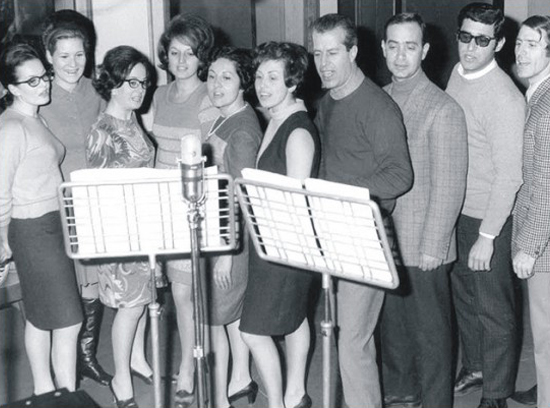 m the 1960s and 1970s. They also took the opportunity to reunite Alessandroni’s Cantori Moderni choir, who had not performed together since the early 1980s. Dell’Orso’s beautiful voice can be heard on the Theme of Rome track. The album also features vocals by Norah Jones and also Jack White who also provided the lyrics for his three songs. Even more recent, Dell’Orso was picked up by Alex Puddu, another true devotee of Italian vintage sound, to work on his 2013 album Registrazioni Al Buio, where she laid down 3 very smooth tracks (5*).
m the 1960s and 1970s. They also took the opportunity to reunite Alessandroni’s Cantori Moderni choir, who had not performed together since the early 1980s. Dell’Orso’s beautiful voice can be heard on the Theme of Rome track. The album also features vocals by Norah Jones and also Jack White who also provided the lyrics for his three songs. Even more recent, Dell’Orso was picked up by Alex Puddu, another true devotee of Italian vintage sound, to work on his 2013 album Registrazioni Al Buio, where she laid down 3 very smooth tracks (5*).
To try and cover all the composers, producers and productions Edda Dell’Orso worked with especially in the specific 60′ to 70’s period, would be a bit of a feat, and true fans will agree that I’m really only scratching the surface here. Her work is the epitome of intelligence and sophistication and she is the sound of Italian cinema, and remarkably she still continues to perform today with her strong distinctive voice. And obviously there’s a lot more we can talk about, regarding those great Italian composers that she worked with, that thankfully are now getting the praise they have always deserved. In time I’m hoping to cover a special selection of favourite cinematic Italian 7’S, but for now, stay tuned because there will be a follow up post tomorrow, celebrating another Italian female legend of the cinema soundtrack, Christy.
(1*) Edda Dell’Orso performing C’era una volta il West live in 1982.
(2*) Alessandroni was an accomplished whistler, and he can be heard quite famously on numerous Leone’s western soundtracks, and also was responsible for THAT twangy guitar riff that is central to the main theme for The Good, the Bad and the Ugly.
(3*) I Cantori Moderni, was an eight-to-sixteen person vocal group featuring Edda Dell’Orso, Giulia De Mutiis (Alessandroni’s first wife), Gianna Spagnuolo, Augusto Giardino, and Franco Cosacchi.
(4*) Mario Bava’s work from the “golden age” of Italian horror films is said to have kick-started the giallo film genre and the modern “slasher film”. He was also a special effects artist and had all director, screenwriter, and cinematographer credits for many movies including Danger: Diabolik, Planet of the Vampires, The Whip and the Body, Black Sabbath and Kill, Baby, Kill to name but a few.
(5*) Dell’Orso with Alex Puddu band captured live in Copenhaghen.
Research and referencing…
Bobby Scott – Moanin’

 Mercury USA 7″, Cat# 72077, 1962
Mercury USA 7″, Cat# 72077, 1962
Hip cat Bobby Scott (born Robert William Scott, in 1937, Mt. Pleasant, New York) is one of those mysterious lost and shadowed artists that really deserves to be pushed into the brightest spotlight, and for those of you out there that love your RnB snappy and snazzy and don’t know this one…well, you should!
Scott was a gifted music prodigy, one who could play piano, double bass, cello, vibraphone, accordion, clarinet, and of course knew how to use his voice box just fine! He studied under Edvard Moritz at the La Follette School of Music at the age of eight, and then in 1949 studied composition with Edvard Moritz, a former pupil of Claude Debussyand, and was working professionally at 11.
It was the early 50’s and despite his early classical training, Scott followed his teen callings towards jazz and played with small bands led by the great Louis Prima and Gene Krupa and cut some tracks for Verve Records with a few of these great small groups.
At 16, he started recording for several other record labels including Bethlehem, Savoy, and ABC, who in 1956, released the hit “Chain Gang” written by Sol Quasha and Hank Yakus, which peaked at #13 on the U.S. Billboard Hot 100!
In 1960, Scott began teaching music theory and harmony and returned to his studies under Moritz. He also signed with Atlantic, releasing a trio of albums under his own name, and started working with other artists, notably Bobby Darin, who he would become a very dear friend to.
That same year, Bobby Scott wrote the title theme for the Broadway version of Shelagh Delaney’s 1958 British play “A Taste Of Honey”, which was exotically made famous by pianist Martin Denny. The instrumental tune was soon given lyrics and was stylishly recorded by the beautiful Julie London, and also Sarah Vaughan, Bobby Darin and by some band called The Beatles. All these versions are quite unique to each other, and I’m sure Mr.Scott must have been pretty chuffed with every interpretation.
Bobby’s big hit won him a Grammy in 1962, but thanks to Herb Alpert’s US Top 10 take, 3 more were added to the list 3 years later. It has been covered so many times by so many great artists but it’s Martin Denny’s 69′ Exotic Moog version I find the most intriguing.
Around 1962, Scott entered one of the few stable periods of his career, taking on as staff producer at Mercury records and working extensively with Quincy Jones. There he would output four albums including the vocal release When the Feeling Hits You, which also happens to be the flip of this killer 45!
Moanin’ first appeared on the self titled Art Blakey and the Jazz Messengers album, recorded in 1958, and was written by pianist Bobby Timmons. Soon after, the composition was given lyrics by Jon Hendricks, who is considered one of the originators of “Vocalese”, and was taken up by Lambert, Hendricks & Ross who released a really super smooth vocal version on Columbia, which even sounds better with a Martini or two!
But it’s Scott’s version that blows the stripey socks off! His mod take is tempting from the first few seconds the open piano chords call. It’s jazz, but it cops a big whack with a broken bottle of rock ‘n’roll, and that mix is deliriously delightful! And again, here we get some extra topping, quite a lot actually, with some killing twang! One of my favourite guitar jigs to dance to, it’s relentless, stabbing and stabbing, but the blade is blunt and dirty. You step to the left, then side step to the right, but it just keeps on gettin’! On his return, Bobby is a slight crazed, and disheveled, then we see him fade into a dark lane far too quickly…and we’re left wondering if that all really just happened?!
Bobby Scott continued to compose up until the mid to late 70’s, but recorded a final farewell album For Sentimental Reasons in 89′. He died only 18 months after, succumbing to lung cancer on November 5, 1990 at the age of 53 in New York City. He was as a top-flight pianist, composer and arranger who was so important to the jazz world, but with a release like this one, for a brief moment, he was the king of snap jazz n’ pop!
Referencing and recommended reading…..









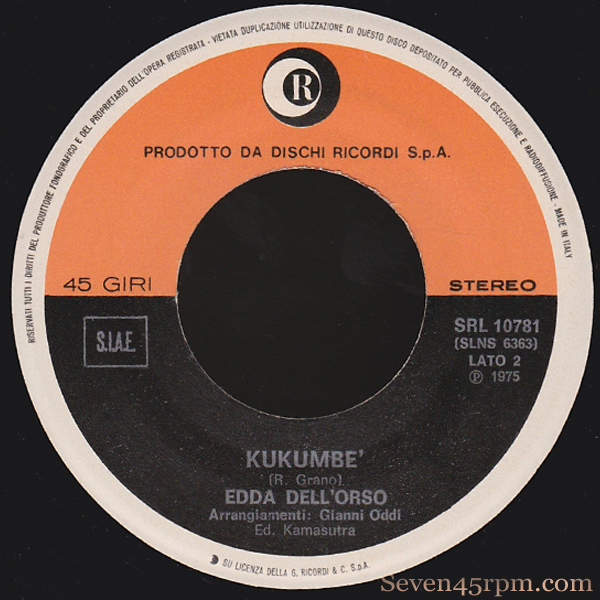
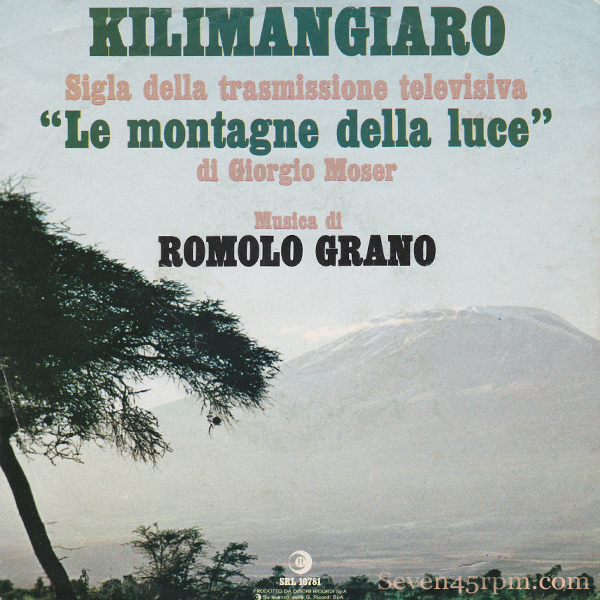
Recent Comments